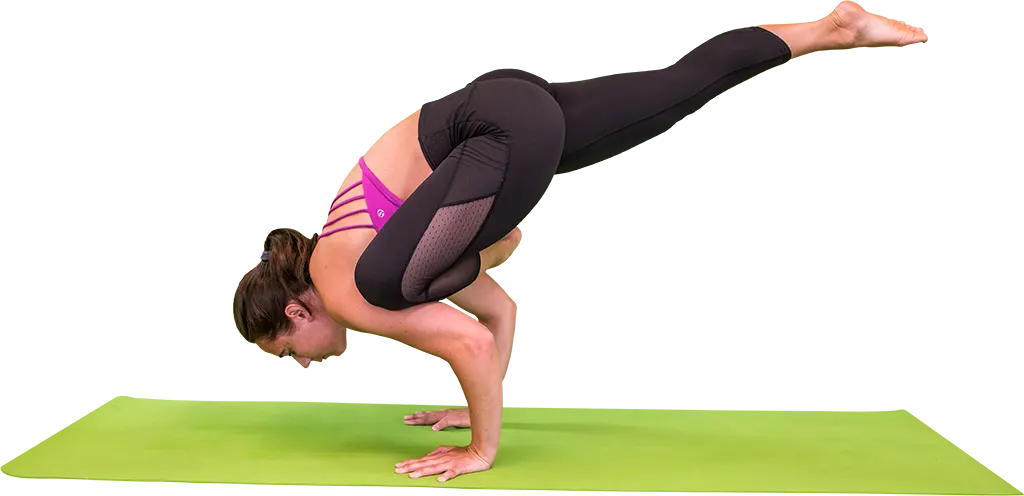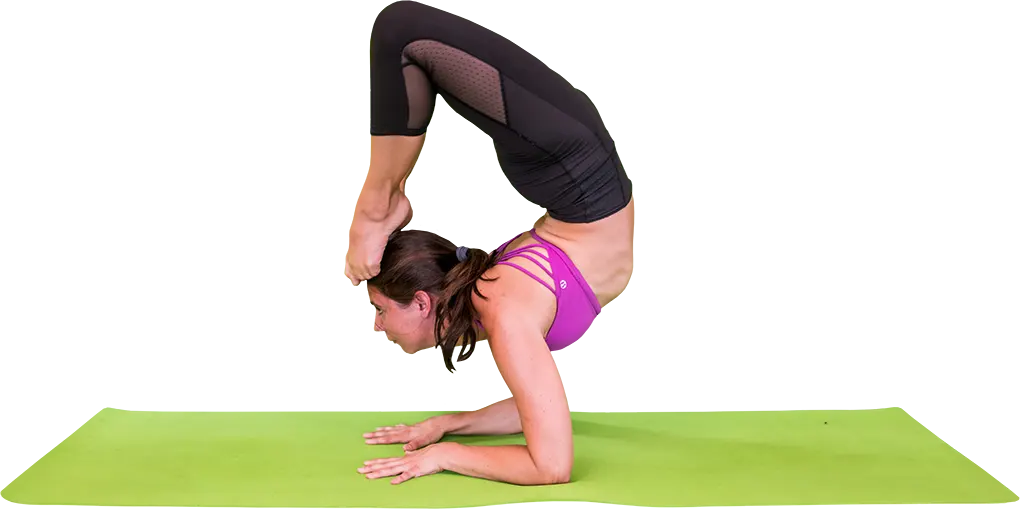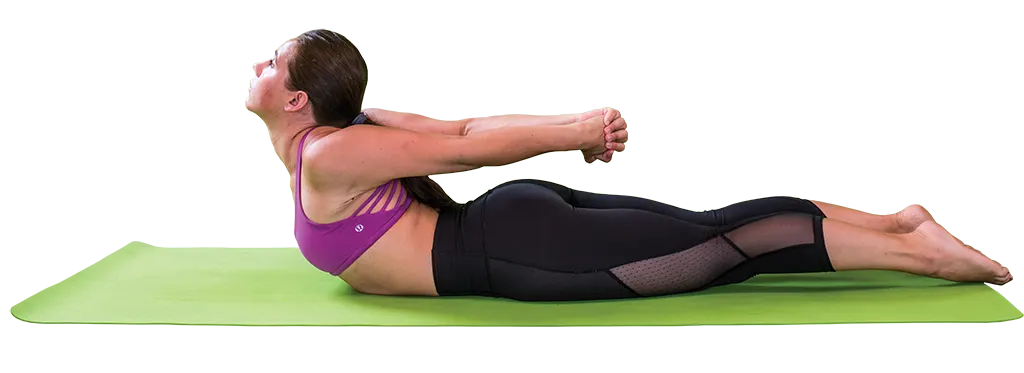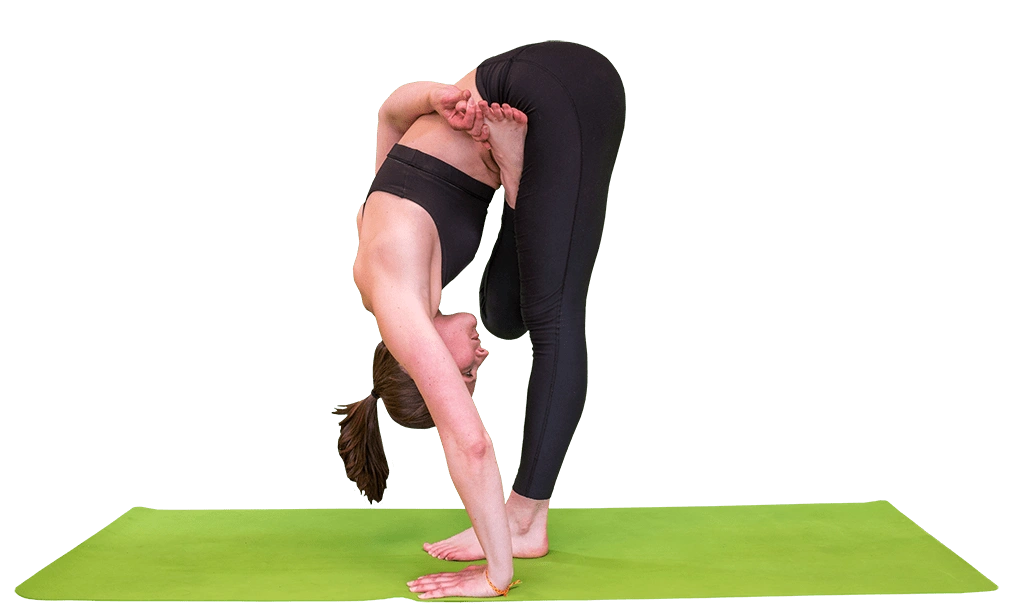Table of content
Preparation
Sit in Vajrasana. Come into tabletop position – palms on the floor wrists under shoulders, knees together, feet together flat on the floor. Inhale, exhale, and relax.
Getting into position
Lean forward, place hands on the floor, and come into a squat position. Bend the right leg and place the top of the foot into a half lotus position (ankle outside of the thigh). Exhale. Inhaling, lengthen the spine. Exhaling, bend forward, place the left upper arm under the right ankle and right upper arm under the right upper shin. Lift your hips up, bend farther, and place the palms on the floor under the shoulders (keep the right ankle and shin in place). Keeping your elbows parallel to each other, shift your weight onto your hands, and carefully lift your rear foot off the floor (leaning forward). Straighten your rear leg backward behind you, and straighten your torso in front. Try to keep your rear leg, spine, and neck as much in-line with each other as possible. Focus on a fixed point in front of you for balance. Hold with normal breathing for as long as comfortable.
Coming out of position
Slightly relax the body. Carefully bend the rear knee in toward your chest and place the rear foot on the floor. Balance most of your weight on your rear foot; use your left hand to release your right foot and come back into a squat position. Inhale, exhale, and relax. Repeat on the other side.



